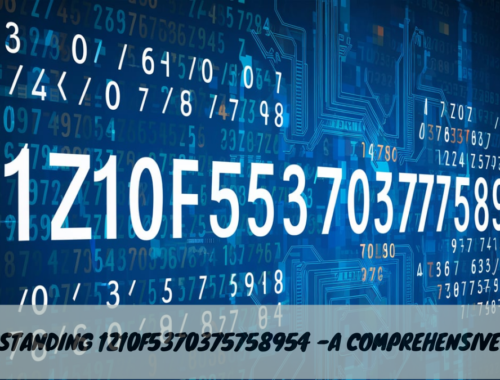
Understanding the 9300120111410471677883 USPS Scam – A Comprehensive Guide
In recent years, digital communication has become an integral part of our lives, making it easier for us to stay connected and access services. However, it has also given rise to various cyber threats, including phishing scams. One such scam that has gained attention is the “9300120111410471677883 USPS scam.”
The “9300120111410471677883 USPS scam” is a phishing attempt using fake USPS texts to steal personal information. Be cautious and verify links before clicking.
This article delves into the details of this scam, providing insights, analysis, and guidance on how to protect yourself and others from falling victim to it.
What is the 9300120111410471677883 USPS Scam?
The “9300120111410471677883” USPS scam is a form of phishing scam that targets individuals through fake text messages, pretending to be from the United States Postal Service (USPS). The scam is designed to trick recipients into believing they have a pending package delivery issue or need to verify their information to receive a package. The message typically includes a link that directs the recipient to a fraudulent website where they are asked to enter personal information.
How the Scam Works
- Initial Contact: The scam begins with the victim receiving a text message that appears to be from USPS. The message often includes a tracking number, such as “9300120111410471677883,” and a sense of urgency, prompting the recipient to take immediate action.
- Fake Website: The text message contains a link that leads to a fake website designed to look like the official USPS site. The website may ask for personal information, such as name, address, and payment details, under the guise of verifying the delivery.
- Information Theft: Once the victim enters their information, the scammers capture it for fraudulent purposes. This can lead to identity theft, unauthorized financial transactions, and other malicious activities.
Common Characteristics of the 9300120111410471677883 USPS Scam
- Urgent Language: The message often uses urgent language, such as “urgent delivery issue” or “package on hold,” to create a sense of urgency and prompt immediate action.
- Official-Looking Links: The links included in the message may appear to be official, with URLs that mimic legitimate USPS web addresses.
- Personal Information Request: The scam attempts to collect personal information by asking the victim to fill out forms or verify their details.
The Impact of the 9300120111410471677883 USPS Scam
The 9300120111410471677883 USPS scam can have significant consequences for victims, including:
- Financial Loss: Victims may suffer financial losses if they provide payment information or fall for subsequent scams.
- Identity Theft: Scammers can use the stolen information to commit identity theft, leading to long-term consequences for the victim’s credit and personal security.
- Emotional Distress: Falling victim to a scam can cause emotional distress, anxiety, and a loss of trust in digital communication.
Protecting Yourself from the 9300120111410471677883 USPS Scam
Understanding how to recognize and protect yourself from scams like the 9300120111410471677883 USPS scam is crucial in today’s digital world. Here are some strategies to help you stay safe:
Recognizing Red Flags
- Check the Sender: Always verify the sender’s phone number or email address. Legitimate organizations like USPS will use official communication channels.
- Analyze the Message: Look for spelling and grammatical errors, which are common in phishing messages. Be cautious of messages that create a sense of urgency.
- Verify Links: Hover over links to see the actual URL before clicking. Official USPS websites will have “.usps.com” in the domain.
Best Practices for Online Security
- Use Strong Passwords: Use unique, complex passwords for different accounts to minimize the risk of unauthorized access.
- Enable Two-Factor Authentication: Enable two-factor authentication (2FA) for added security on accounts that offer this feature.
- Regularly Monitor Accounts: Regularly review your bank statements and credit reports for unauthorized transactions.
Reporting Suspicious Activity
If you receive a suspicious message, report it to the appropriate authorities. For USPS scams, you can report phishing attempts to the United States Postal Inspection Service.
What to Do if You’ve Fallen Victim
If you suspect that you’ve fallen victim to the 9300120111410471677883 USPS scam or any other phishing scam, take immediate action:
- Contact Your Bank: Notify your bank or credit card company to prevent unauthorized transactions.
- Change Passwords: Change passwords for any accounts that may have been compromised.
- Report to Authorities: Report the scam to local law enforcement and the Federal Trade Commission (FTC).
FAQs about the 9300120111410471677883 USPS Scam
What should I do if I receive a suspicious USPS text message?
If you receive a suspicious text message claiming to be from USPS, do not click on any links or provide personal information. Instead, report the message to USPS and delete it.
Can the 9300120111410471677883 tracking number be legitimate?
The tracking number “9300120111410471677883” is often used in scams and is not a legitimate USPS tracking number. Always verify tracking numbers on the official USPS website.
How can I verify the legitimacy of a USPS message?
To verify the legitimacy of a USPS message, visit the official USPS website or contact their customer service directly. Do not rely on the information provided in the message.
Is it safe to click on links in text messages from USPS?
It is not safe to click on links in unsolicited text messages claiming to be from USPS. Always verify the sender and visit official websites directly.
What steps should I take to report a phishing scam?
To report a phishing scam, contact the United States Postal Inspection Service and the Federal Trade Commission (FTC). Provide them with details of the message and any relevant information.
Conclusion
The 9300120111410471677883 USPS scam is a reminder of the importance of staying vigilant and informed in the digital age. By recognizing the signs of phishing scams and taking proactive measures to protect yourself, you can safeguard your personal information and financial security. Stay informed, be cautious, and help spread awareness to protect others from falling victim to scams like these.
You May Also Like

AMZP22X – Unveiling Amazon’s Advanced Cloud Solutions
July 14, 2024
Exploring the Innovative World of Cubvh – A Comprehensive Guide
July 12, 2024


